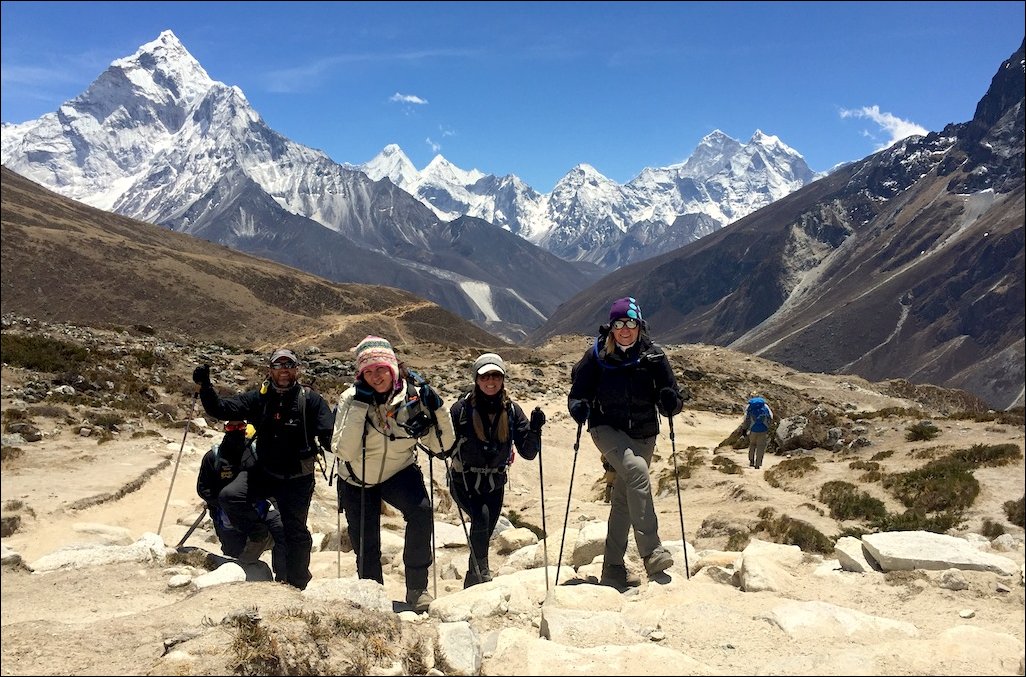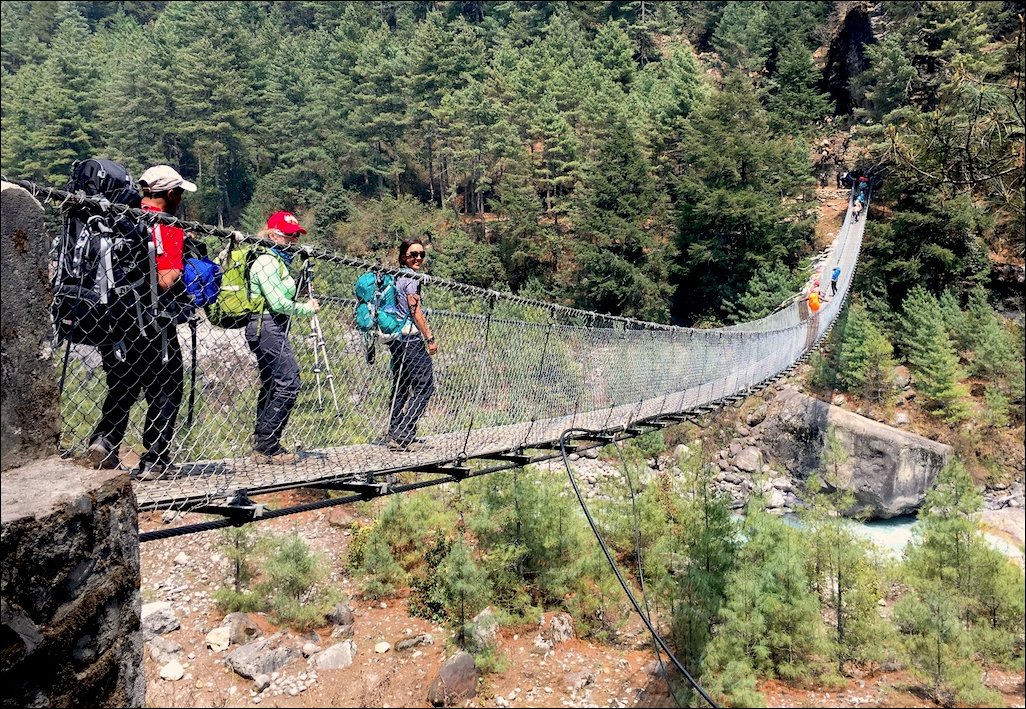Earthquake Aftermath
The 7.8 earthquake that hit Nepal on April 25, 2015 is both a bad memory and daily reminder for Nepalese still rebuilding. For trekkers heading up the Khumbu Valley on their way to Everest Base Camp the quake’s aftermath is a testament to Nepal’s communal spirit and resilience.
The 38 mile trail to Everest Base Camp reopened a year ago and is in better shape today than it was before the quake hit, yet tourism to the region is down by as much as 50 percent. An improved trail system is in place and some tea houses en route where trekkers overnight have been upgraded with added amenities, according to Tusker Trail Asia trip leader Mel Kaida. Mel was leading a Tusker group when the quake hit and returned a year later (April 2016) with a Tusker group who made it to Everest Base Camp without incident. Mel conducted a moment of silence with her group to commemorate the one year anniversary of the disaster.
“All the trails were rebuilt and all passable, nothing is unsafe. The Tengboche section is now wider with more steps,” Mel observed. “I was surprised to see how quickly people rebuilt. Nepal is a country where things are not always done so efficiently.” She said the communities along the route had a double incentive to get the trail reopened. It is a major source of income for the villages as well as the connecting link in the Khumbu Valley.
Luck of the Seismic Draw
The Khumbu Valley was not hit as hard as other areas in Nepal; 83 percent of the buildings on the Everest Base Camp trek were undamaged, according to a report by Miyamoto International. The California seismic engineering firm was hired by Nepal’s government to do assessments of the trek routes. The nine suspension bridges and rock retaining walls were mostly spared and strengthened on the EBC trail system.
Kathmandu was not as lucky as it was closer to the epicenter of the back to back quakes. The aftershock hit May 12 and registered 7.3 in the Langtang Valley. Tent camps remain in the capital where displaced people await rebuilding of their villages. Mel said there were few tourists in Kathmandu during the April 2016 trip but she was still able to get her group to see several historic sites. Other major sites there remain closed although work is progressing. The United States Ambassador’s Fund recently pledged $100 million to fix the 100-year-old Gaddi Baithar palace in Kathmandu.
Politics of Rebuilding
Nepal’s government has come under fire for the slow pace of rebuilding. Even though the main trekking routes that bring the country foreign currency are open other areas are still suffering. Political fighting over a new constitution slowed relief efforts in 2015/2016, and even though large sums of relief money were pledged by foreign countries little has actually been spent to rebuild thus far.
Nepal suffered the loss of 9,000 lives and 600,000 buildings and much of the rebuilding has been done by local villagers with financial help from NGOs. Elderly women forming assembly lines passing bricks to local building crews are among the iconic images photographers have captured. Recently Nepal’s National Reconstruction Authority started to implement rebuilding plans, yet some NGOs in frustration bypassed the government to give support directly to villagers to help them survive winter and monsoon season.
How Can You Help? Go in 2017
Many tourists avoid disaster torn countries and for good reason. Nepal’s situation is complex and a full rebuild could take years. However the trekking route to Everest Base Camp is fully restored as evidenced by Tusker’s successful trip this past April. Mel described half empty tea houses that are normally brimming with global trekkers.
While it’s wonderful to have the backcountry to yourself, Nepal needs the business now. Trekkers who go in 2017 will experience not just the majesty of the Himalaya, but the inspiring resilience of Nepal’s people.




